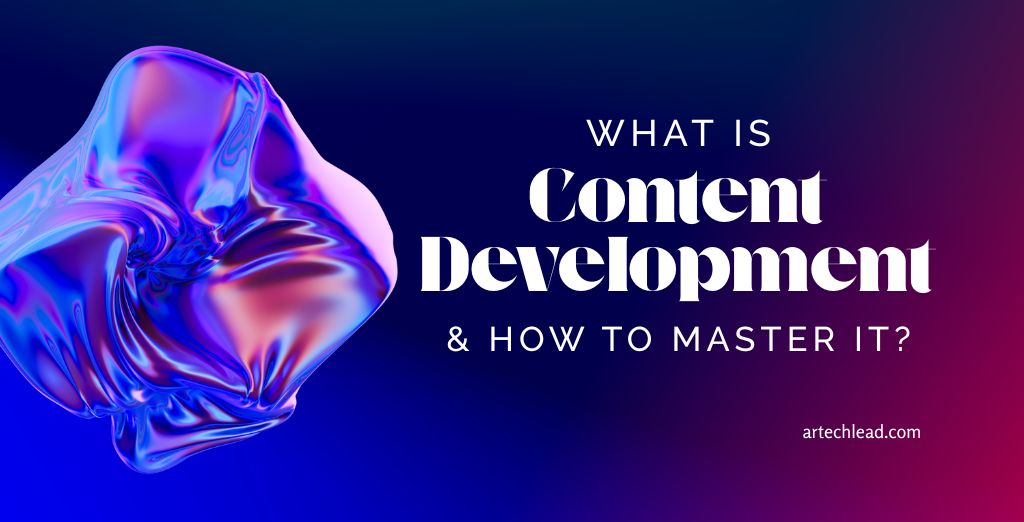Content Development: What It Is & How to Master It Effectively
In today’s digital age, content is king. Whether you’re running a business, managing a personal brand, or simply trying to engage with an audience online, content development plays a pivotal role in your success. But what exactly is content development? And more importantly, how can you do it right?
In this blog post, we’ll break down the concept of content development, its importance, and provide actionable tips on creating impactful content that resonates with your audience.
What Is Content Development?
Content development refers to the process of researching, creating, and publishing various forms of content—such as articles, videos, podcasts, infographics, eBooks, social media posts, and more—with the goal of engaging, informing, or entertaining a target audience. The ultimate aim is to deliver value to your audience while achieving specific business objectives, such as increasing brand awareness, generating leads, or driving sales.
Content development isn’t just about writing words or producing videos; it’s about crafting meaningful experiences that connect with people on a deeper level. It involves understanding your audience, aligning your content with their needs, and ensuring consistency across all platforms.
Why Is Content Development Important?
- Builds Trust and Authority: High-quality content positions you as an expert in your field. When your audience finds your content helpful, they’re more likely to trust your brand and return for more.
- Drives Organic Traffic: Well-optimized content helps improve search engine rankings, making it easier for potential customers to find you online.
- Boosts Engagement: Engaging content encourages likes, shares, comments, and other interactions, which can amplify your reach and foster community building.
- Supports Marketing Goals: From lead generation to nurturing customer relationships, content serves as the backbone of most marketing strategies.
- Enhances Brand Identity: Consistent messaging and storytelling through content help shape your brand’s voice and personality.
How to Do Content Development the Right Way
Creating effective content requires a strategic approach. Here are some key steps to ensure you’re doing content development right:
1. Understand Your Audience
The foundation of great content lies in knowing who you’re creating it for. Conduct thorough research to understand your audience’s demographics, preferences, pain points, and behaviors. Use tools like Google Analytics, social media insights, and surveys to gather data.
Ask yourself:
– Who is my ideal reader/viewer?
– What problems do they face?
– What type of content do they consume?
– Where do they spend their time online?
Once you have these answers, tailor your content to meet their needs and expectations.
2. Set Clear Objectives
Before diving into content creation, define what you want to achieve. Are you looking to educate your audience, promote a product, or build brand loyalty? Setting clear goals will guide your content strategy and help measure success.
For example:
– Goal: Increase website traffic by 20% in three months.
– Strategy: Publish SEO-optimized blog posts twice a week targeting high-volume keywords.
3. Choose the Right Format
Not all content formats work for every audience or platform. Depending on your goals and audience preferences, choose the format that best suits your message. Some popular options include:
– Blog posts/articles
– Infographics
– Podcasts
– Social media posts (images, reels, stories)
Experiment with different formats to see what resonates most with your audience.
4. Focus on Quality Over Quantity
While consistency is important, never sacrifice quality for quantity. Poorly written or irrelevant content can harm your credibility and turn off your audience. Invest time in crafting well-researched, insightful, and engaging content that adds real value.
Pro tip: Edit ruthlessly. Remove fluff, tighten sentences, and make sure your content flows logically.
5. Optimize for Search Engines
To maximize visibility, optimize your content for search engines using SEO best practices. This includes:
– Incorporating relevant keywords naturally throughout your content.
– Writing compelling meta titles and descriptions.
– Using header tags (H1, H2, etc.) to structure your content.
– Adding alt text to images for accessibility and SEO benefits.
However, remember to prioritize user experience over keyword stuffing. Google rewards content that satisfies searcher intent.
6. Tell Stories That Resonate
People connect with stories. Instead of bombarding your audience with facts and figures, weave narratives that evoke emotion and make your content memorable. Share personal anecdotes, case studies, or customer success stories to humanize your brand.
7. Promote Your Content
Creating amazing content is only half the battle—you also need to get it in front of the right eyes. Leverage multiple channels to distribute your content, such as:
– Email newsletters
– Social media platforms
do so strategically. For instance, repurpose long-form blog posts into shorter snippets for Instagram or LinkedIn.
8. Analyze and Iterate
Content development is an ongoing process. Regularly review performance metrics like page views, bounce rates, engagement levels, and conversion rates to identify what’s working and what’s not. Tools like Google Analytics, SEMrush, and Ahrefs can provide valuable insights.
Use this data to refine your strategy, experiment with new ideas, and continuously improve.
Common Mistakes to Avoid in Content Development
Even seasoned creators sometimes fall into traps that hinder their content’s effectiveness. Be mindful of these common mistakes:
- Ignoring SEO: Failing to optimize your content for search engines means missing out on organic traffic.
- Lack of Consistency: Inconsistent posting schedules can confuse your audience and reduce engagement.
- Overpromising and Underdelivering: Make sure your content lives up to its headline and promises.
- Neglecting Mobile Users: Ensure your content is mobile-friendly, as a significant portion of users access content via smartphones.
Effective content development takes time, effort, and dedication—but the rewards are worth it. By understanding your audience, setting clear goals, focusing on quality, and leveraging analytics, you can create content that not only captivates but also converts.
Final Words
Remember, content development is not a one-size-fits-all process. Stay flexible, adapt to changing trends, and always keep your audience at the heart of everything you create.
So, are you ready to take your content game to the next level? Start implementing these strategies today, and watch your efforts pay off!
What challenges have you faced in content development? Share your thoughts in the comments below!
Author








SEO Myths Exposed: Why So Many People Get It Wrong - artechlead.com
April 9, 2025[…] doesn’t automatically penalize for duplicate content. However, it might choose which version to index and ignore […]
SEO vs SEM: Key Differences, Benefits & When to Use Each - artechlead.com
April 15, 2025[…] High-quality, valuable content. […]